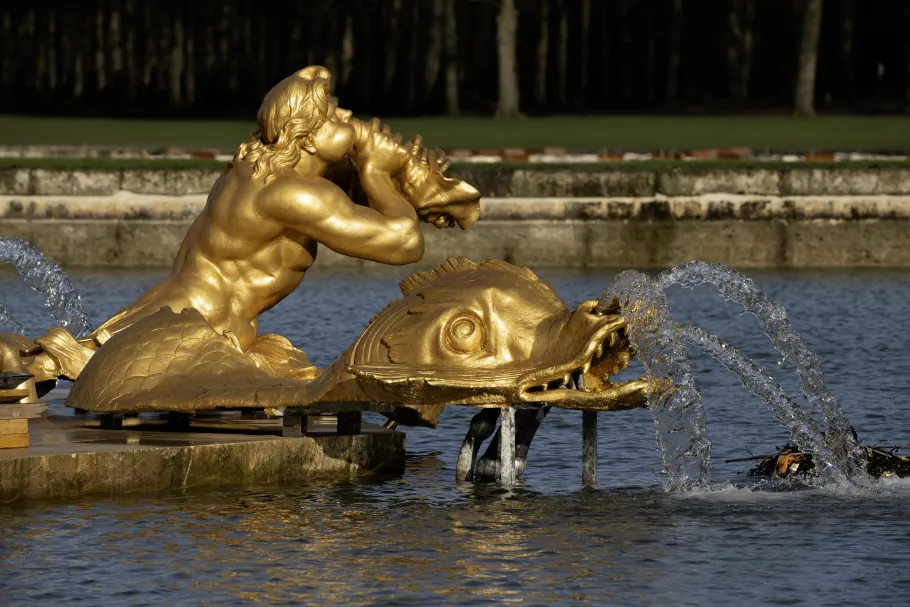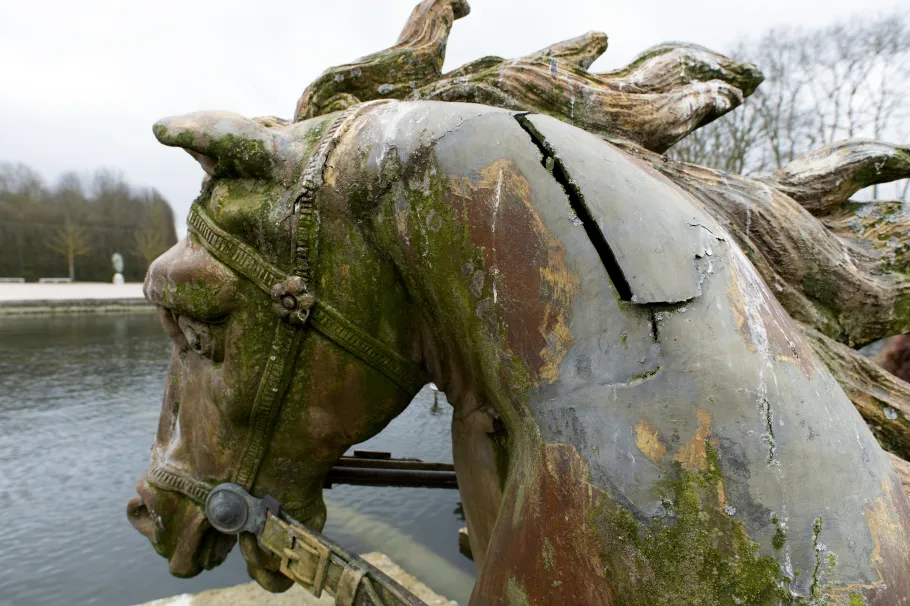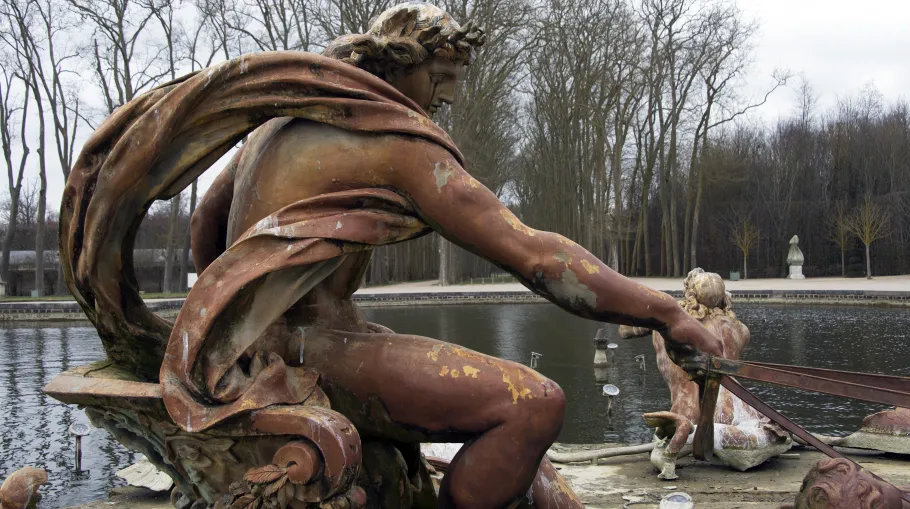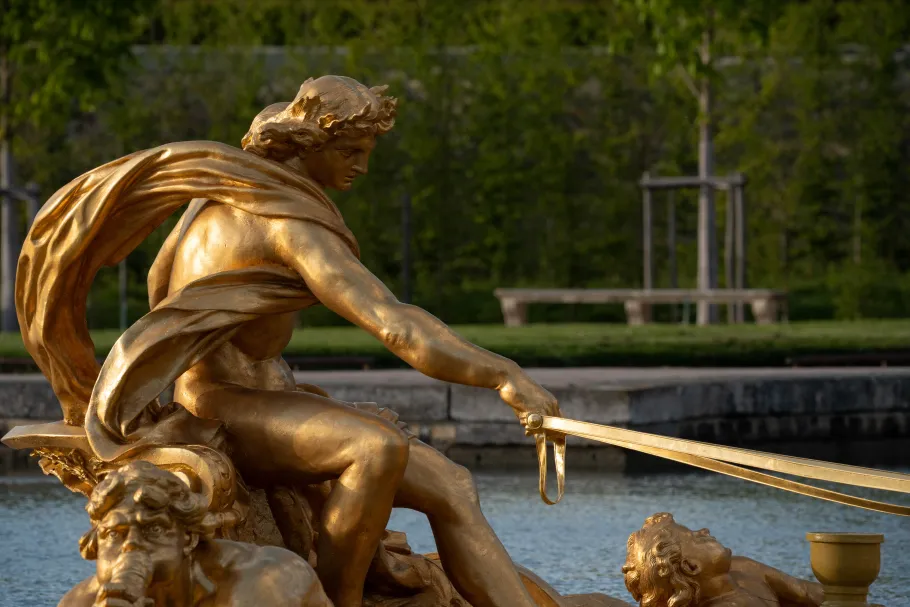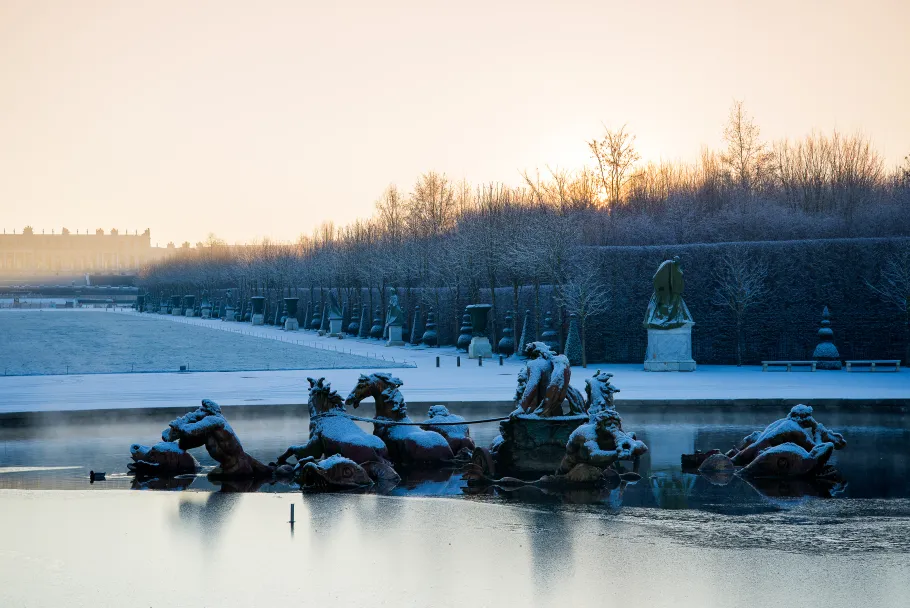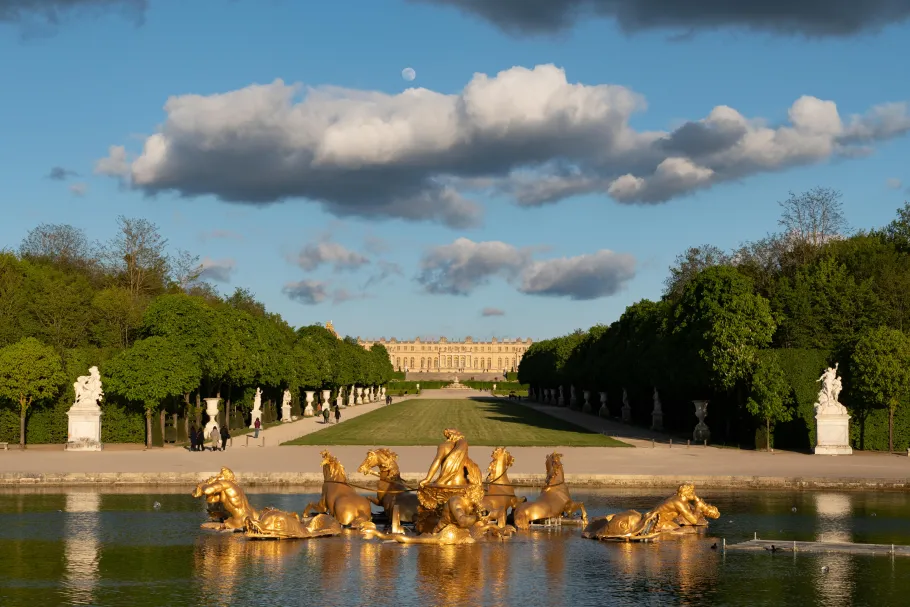Apollo’s fountain is a central element of the Versailles gardens and is now in major need of restoration. The gilded lead parts of Apollo on his chariot need to regain their lustre. Starting in December 2022, the sculpted group will be dismantled, lifted out by crane and taken to a workshop for substantial restoration.

Restoration of Apollo’s fountain
Apollo’s Fountain – a fountain inspired by the legend of the sun god
An architectural masterpiece from the 17th century
Apollo’s fountain lies between the Grand Canal and the Great Lawn, making it a firm part of the Grande Perspective in the gardens of Versailles, as planned by André Le Nôtre.
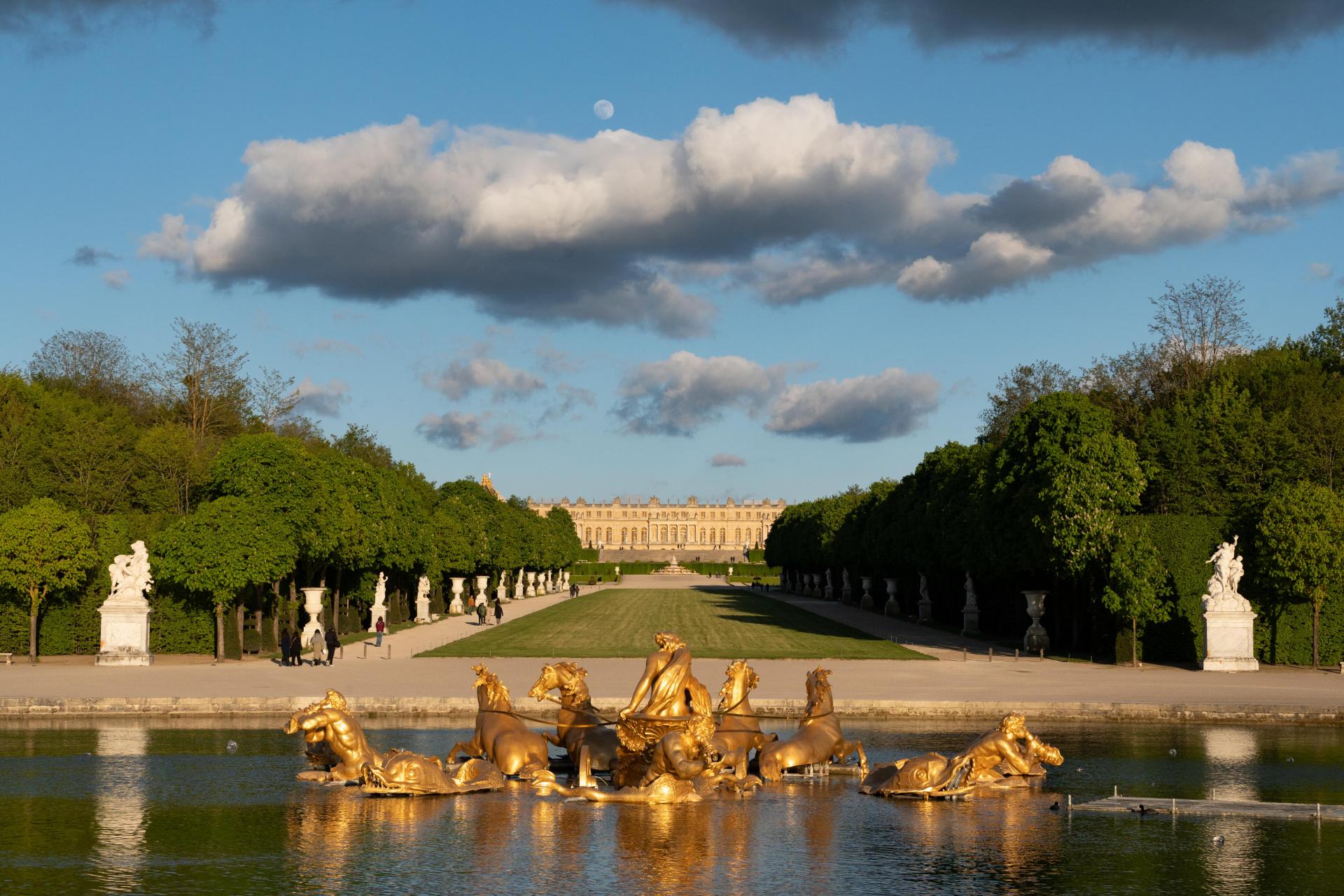
Apollo's fountain
© EPV / Thomas Garnier
Rising majestically from the centre of the fountain is Apollo’s chariot team – a group of thirteen lead statues symbolising the sun god’s journey. Apollo bursts from the water to light up the world, his chariot harnessed to four spirited steeds, accompanied by a cherub. Surrounding him are four sea creatures and four tritons located at the four cardinal points of the stone base.
This group of metal sculptures was created by Jean-Baptiste Tuby between 1668 and 1671, based on a design by Le Brun. It was made at the Gobelins manufactory and then taken to Versailles in 1670, before being gilded the following year.
A proclamation of the glory of the Sun King
Apollo, as the god of the arts, the sun and healing, symbolises power, reason and peace. Louis XIV styled himself on the sun god, presenting himself as a peacemaker, patron of the arts, figure of irrefutable reason and therefore worthy of sitting on the throne of France.
The figure of Apollo can be found all over the Palace of Versailles – especially in the form of this fountain – as an allegory of the king, representing the rising of the sun and therefore a celebration of the glory of Louis XIV.

Apollo’s fountain and the Grand Canal at Versailles
An essential restoration
The last major restoration campaign took place between 1929 and 1933, almost one hundred years ago. Despite regular maintenance, Apollon's chariot, which was heavily used by the water games, was in serious disrepair due to corrosion of the reinforcement, deep deterioration of the lead, severe erosion of the coatings and disorganization of the water effects.
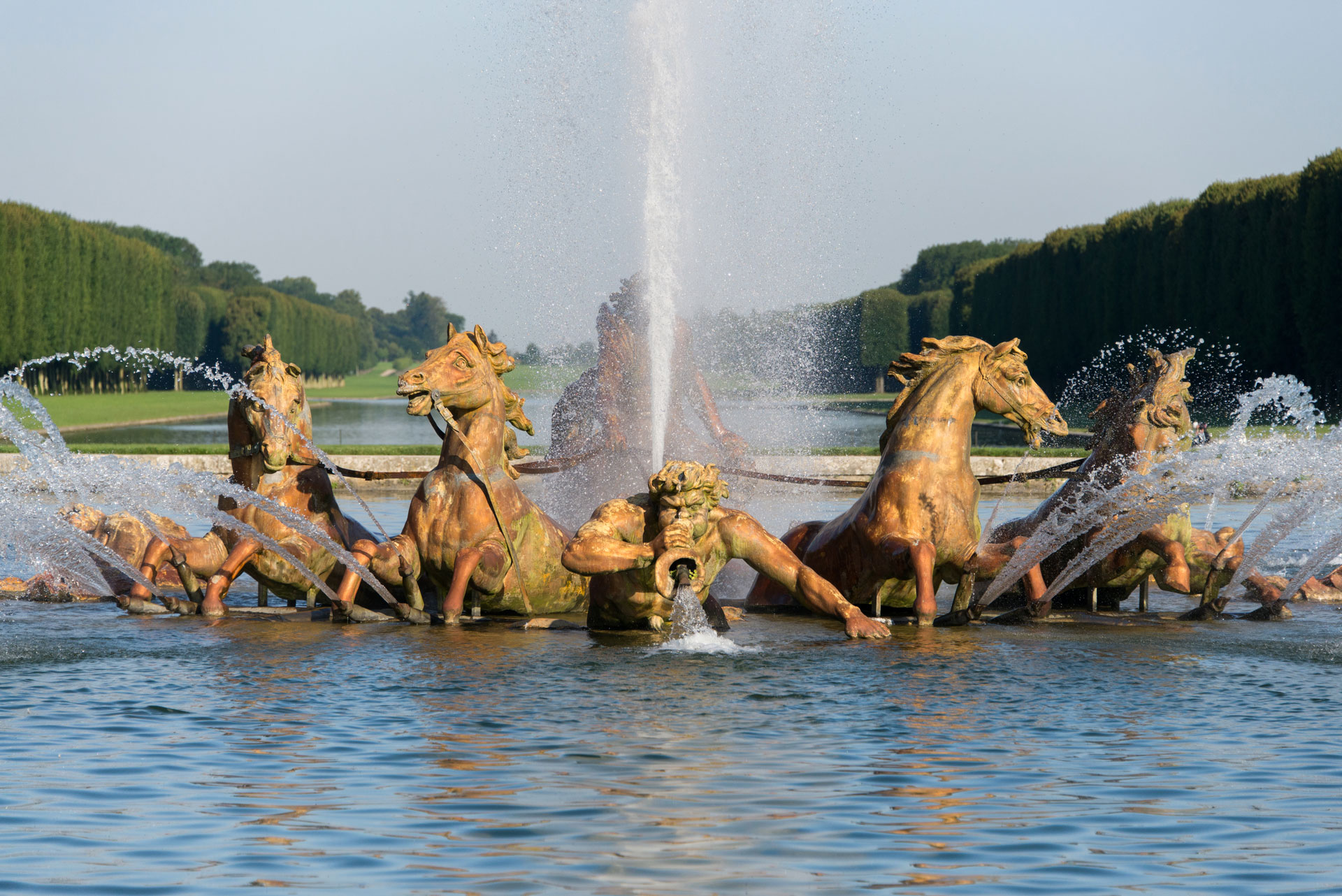
Apollo's fountain before the restoration
© EPV
The completed project involved restoring the lead sculptures, consolidating, gilding and patinating them to restore their original anatomical volumes and bronzes. Conducted under the supervision of Jacques Moulin, chief architect of historic monuments, this heritage operation required the intervention of a number of restorers with exceptional know-how: founders, gilders and fountainsmiths.
The aim was to restore the fountain design of the late 17th century, and to give the sculptures of Apollo's chariot their original "bronzure" coating.
Visitors from all over the world can now admire the dazzling basin of Apollo's chariot and admire its water effects, which contribute to the renown of the gardens of Versailles, just as they did in the time of Louis XIV.
The completion of the restoration of the Bassin d'Apollon marks an important first step towards the opening of a major exhibition devoted to the horse and equestrian civilization in Europe, from July 2, 2024.
Before and after restoration
LAUNCH OF THE RESTORATION OF aPOLLO'S FOUNTAIN
In pictures
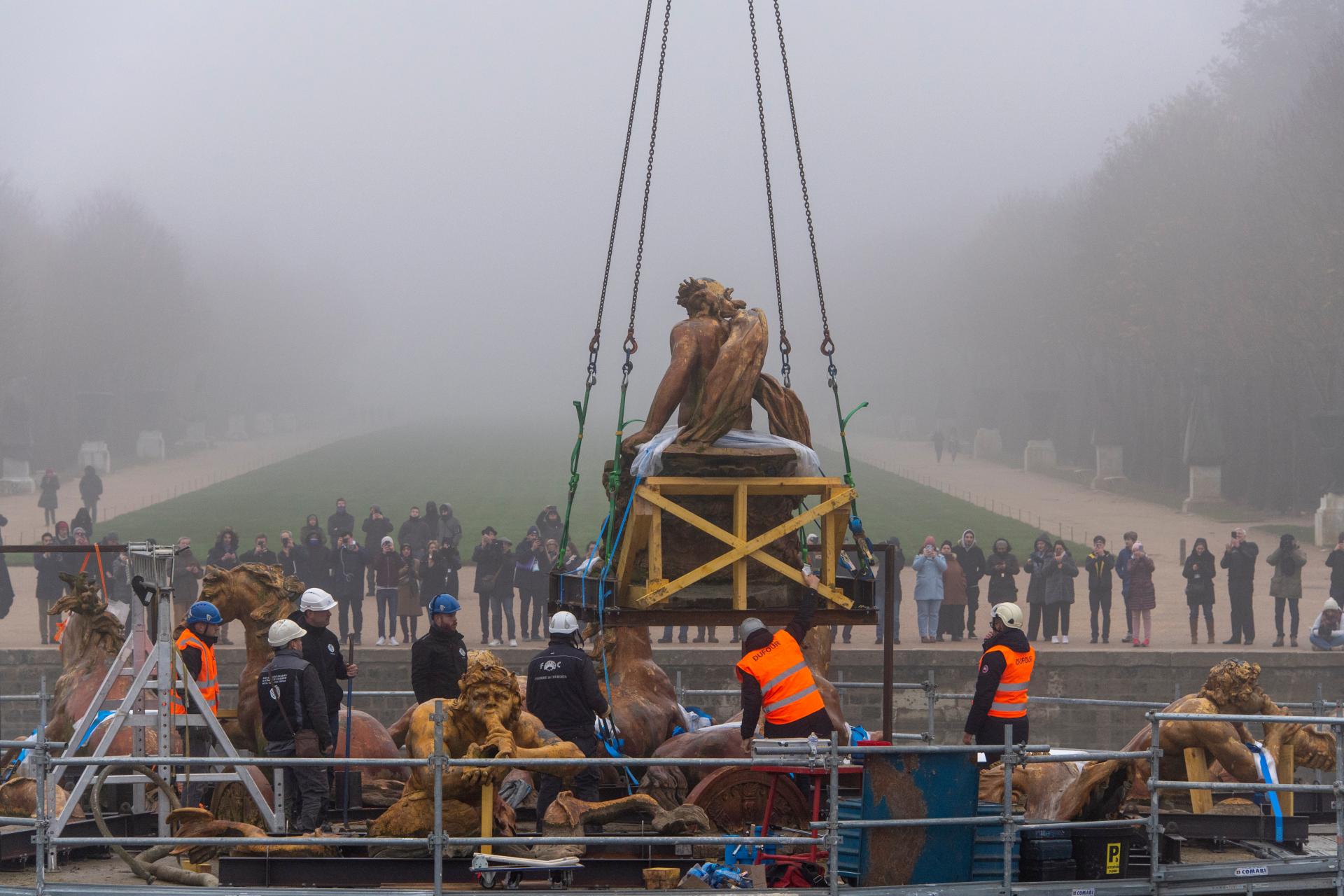
© EPV / Didier Saulnier
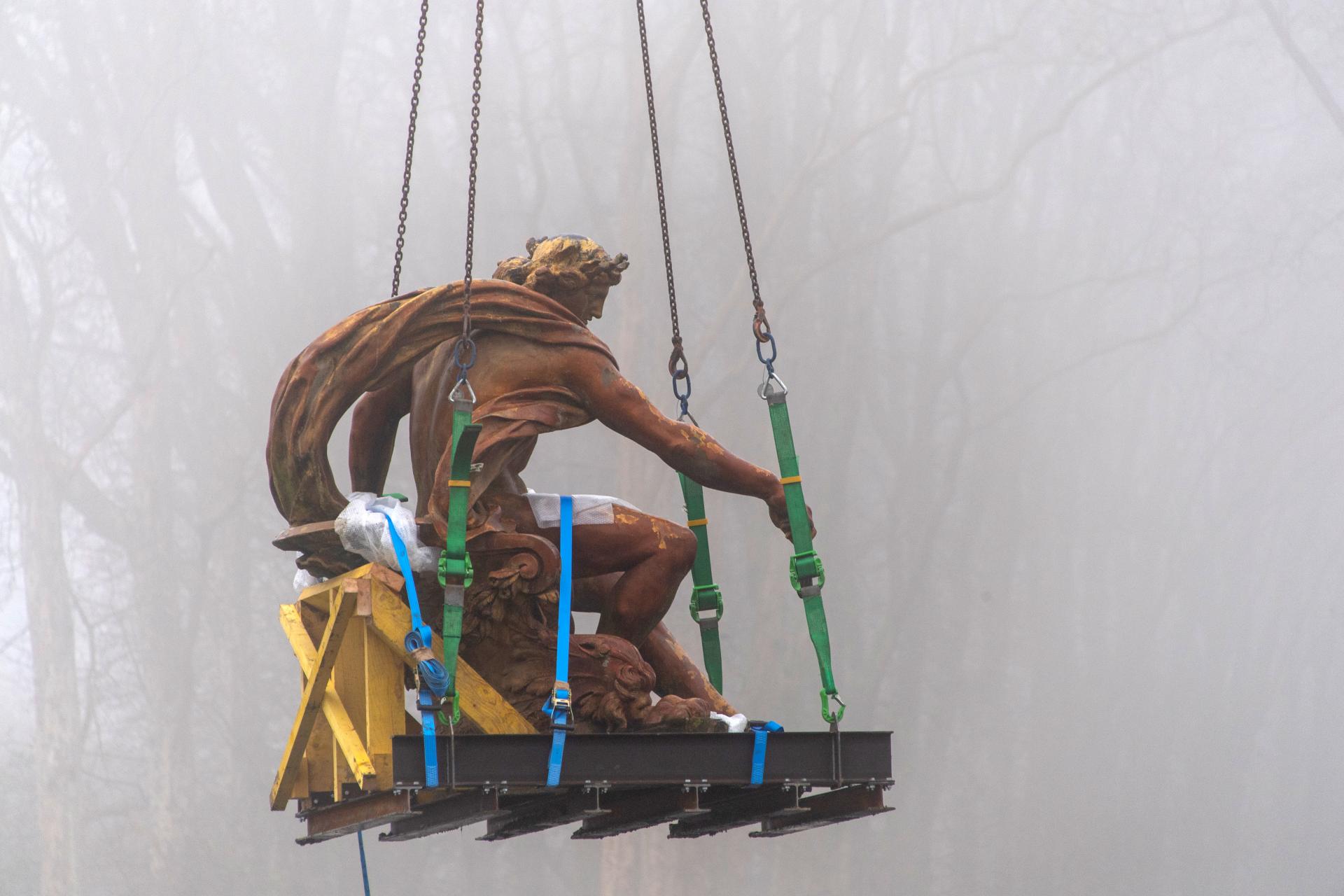
© EPV / Didier Saulnier

© EPV / Didier Saulnier
In video
return of apollo
In pictures
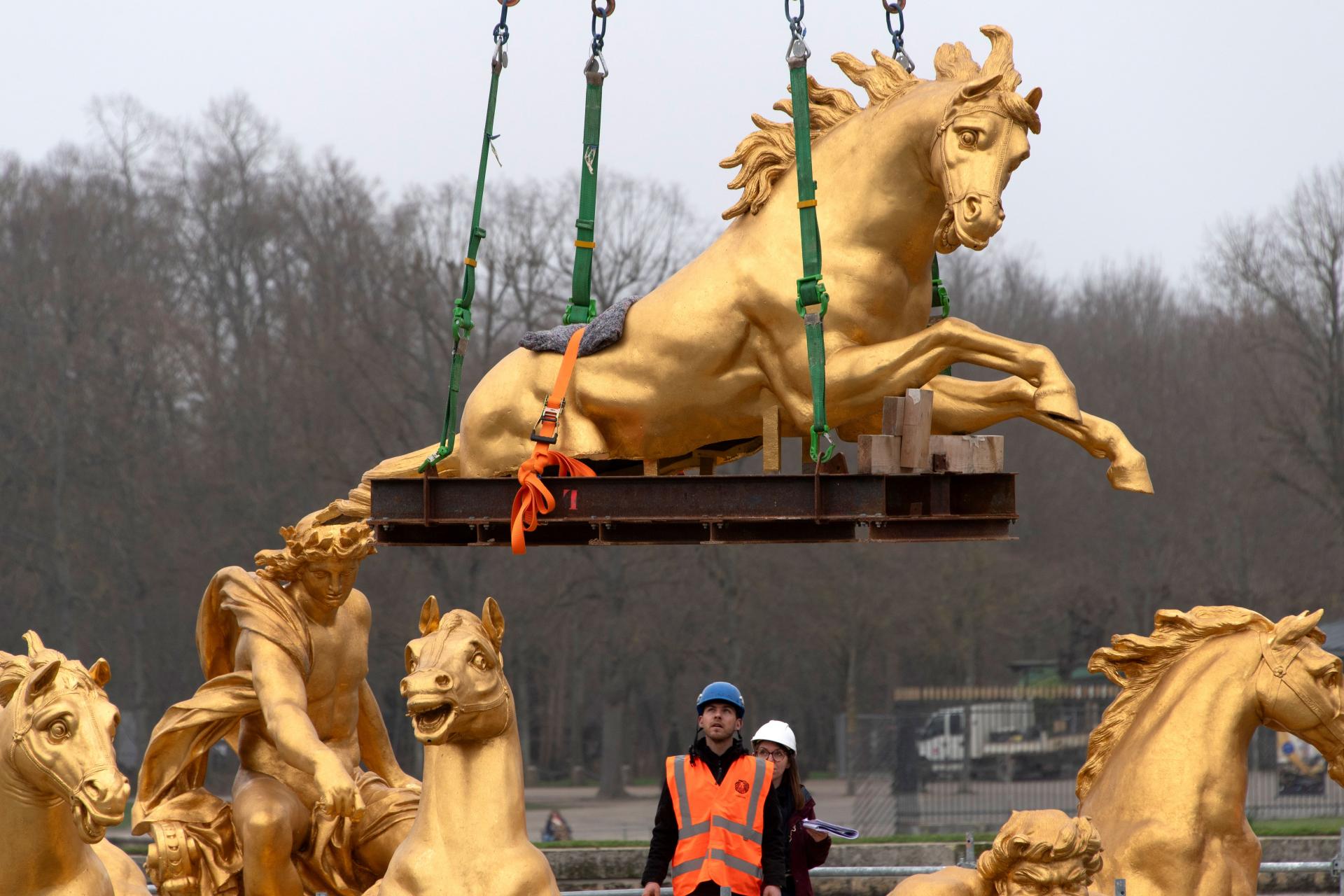
The return of Apollo's horses
© EPV / Didier Saulnier
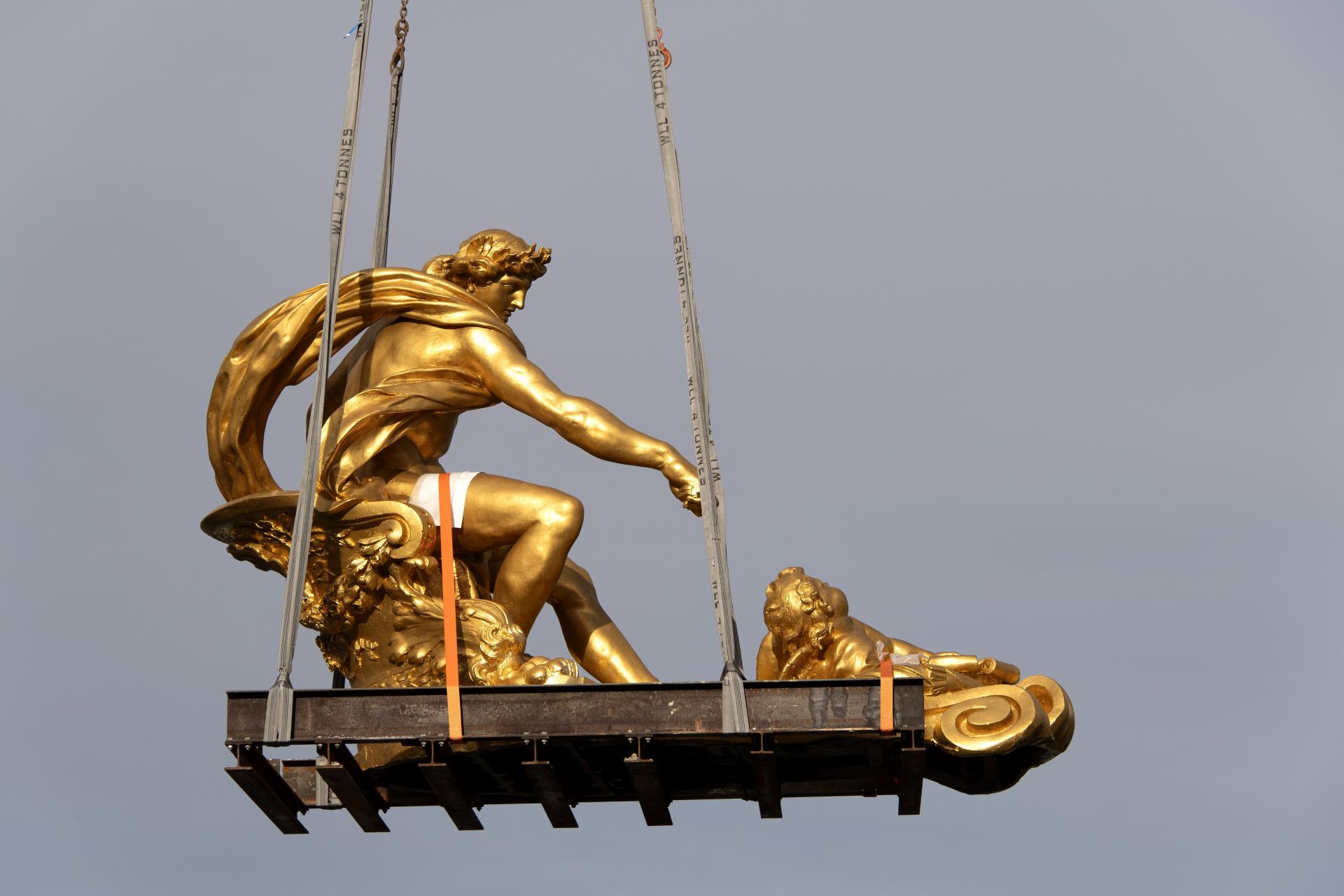
The return of Apollo's sculpture
© EPV / Didier Saulnier
In video
Further reading
The first article on the restoration of the Apollo fountain, "Apollo saved from the waters", is available to read (in French) on the Carnets de Versailles blog
Patronage
The restoration of Apollo’s fountain and its surrounds is possible thanks to the exclusive patronage of CMA CGM Group, a French company and a global reference in transport and logistics.




